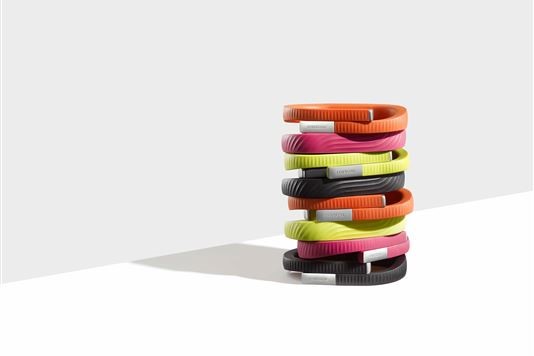
Lovefood’s Charlotte puts the latest get-fit gadget to the test in an attempt to slim down for her summer holidays.
What does UP do?

I was super excited when my UP24 band arrived – I’d noticed a fellow journalist wearing one on a recent press trip, and was fascinated by the insightful nuggets he got from it. With its built-in motion sensor, the band counts every single step you take and encourages you to take more (it can sense how able you are). There’s even a function to measure your calorie intake each day, although you have to input what you eat manually, and the list of chosen foods isn’t exhaustive.
Bedtime wise, the UP24 band can tell you exactly what time you fall asleep, how often you woke during the night, and how much ‘heavy’ sleep you attained (as opposed to ‘light’ sleep). Plus it can wake you up in the morning with a gentle buzz when it thinks you’ve had enough slumber. All these functions sound promising, especially for one who wants to get in shape for an up-and-coming holiday. But does it work in practice?
A sensitive motivator
The calorie count function completely passed me by… you have to enter everything you eat manually via the app, and to be frank I just couldn’t be bothered. Plus logging every crumb I ate seemed a touch too obsessive to me. Maybe one day, years down the line, the UP24 band will magically assess everything you ingest – but until then, I’ll give the food functionality a miss.
The best alarm
I enjoyed seeing how heavily I slept, and made my own connections from this data – the later I drank alcohol, for example, the less heavy sleep I got. A gentle buzzing on my wrist was a far more pleasant way to arise than a screeching alarm, and I found that even though I was often getting out of bed half an hour earlier than usual, I was more awake during the day.
Comfy and cool
The band itself is designed to be comfortable, and that it is, if you take care to buy the right size. I hardly noticed it was there most of the time, and in any case it looks pretty cool (there are a number of colours to choose from). Visually it’s a simple looking device – there’s only one (well-hidden) button and an LED that tells you when it’s in sleep mode. There’s no display screen, which is part of the reason why the band’s battery lasts for days on end.
Is it worth it?
You could opt for the far cheaper (and older) UP band, whereby you have to plug it into the headphone jack of your phone whenever you want to download data (so for example, you’d plug it in as soon as you wake up to see sleep data). That’s £64.99, as opposed to £124.99 for the UP24 band, which transfers data to your phone wirelessly via Bluetooth. Probably worth it, because it’s far less of a faff then; but it does decrease the battery time from 10 days (for the original UP band) to seven days.
I did lose three or four pounds over the course of the month I wore my band for. But more so than weight, I felt far fresher in myself. More rested, and fitter too, because I took notice of the band’s suggestions for a longer walk here and there and was egged on by its shouts of encouragement. It’s an expensive investment, but if you’re lacking in self-motivation and need some help to get in shape, it could be worth it.
Have you tried the UP24 band, or the older version of it? Or do you think it’s a gimmick? Share your thoughts in the comments box below.
You might also like